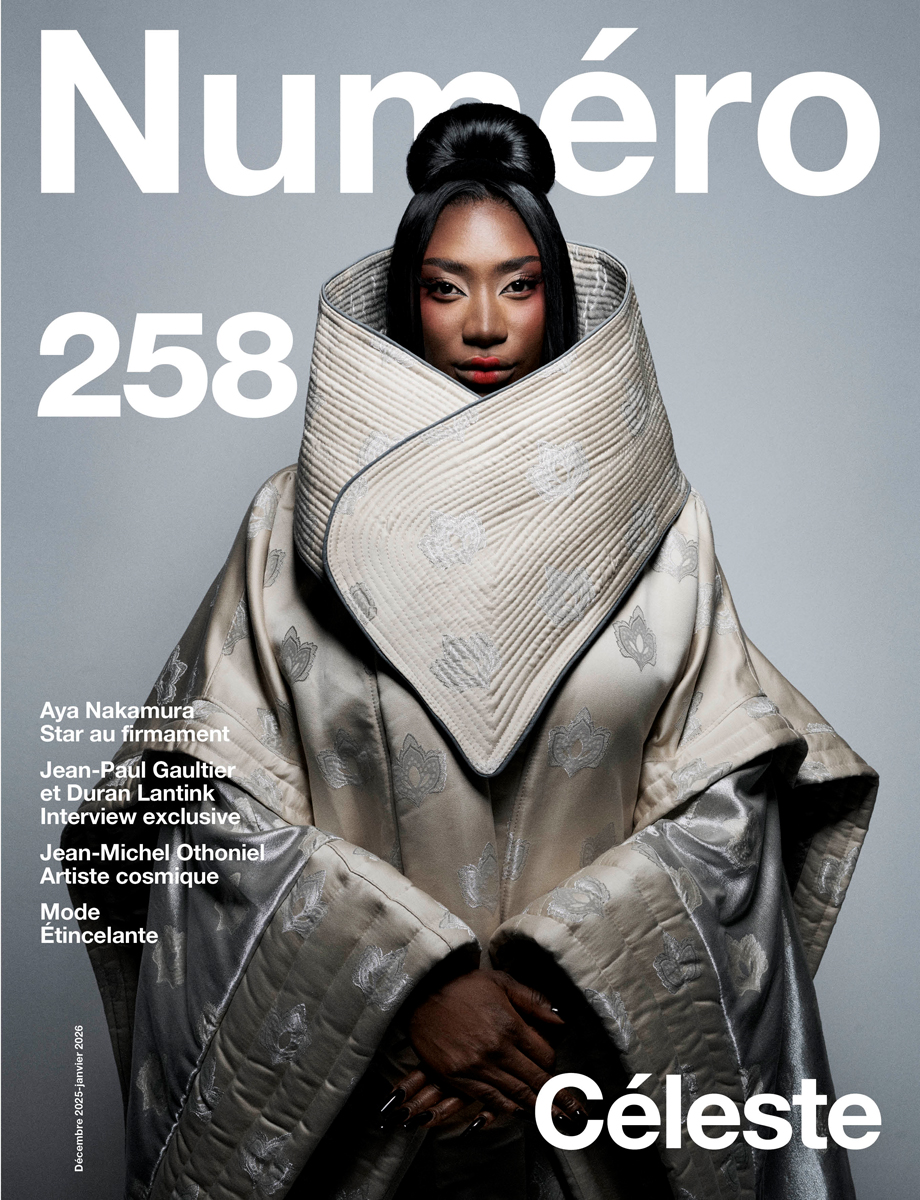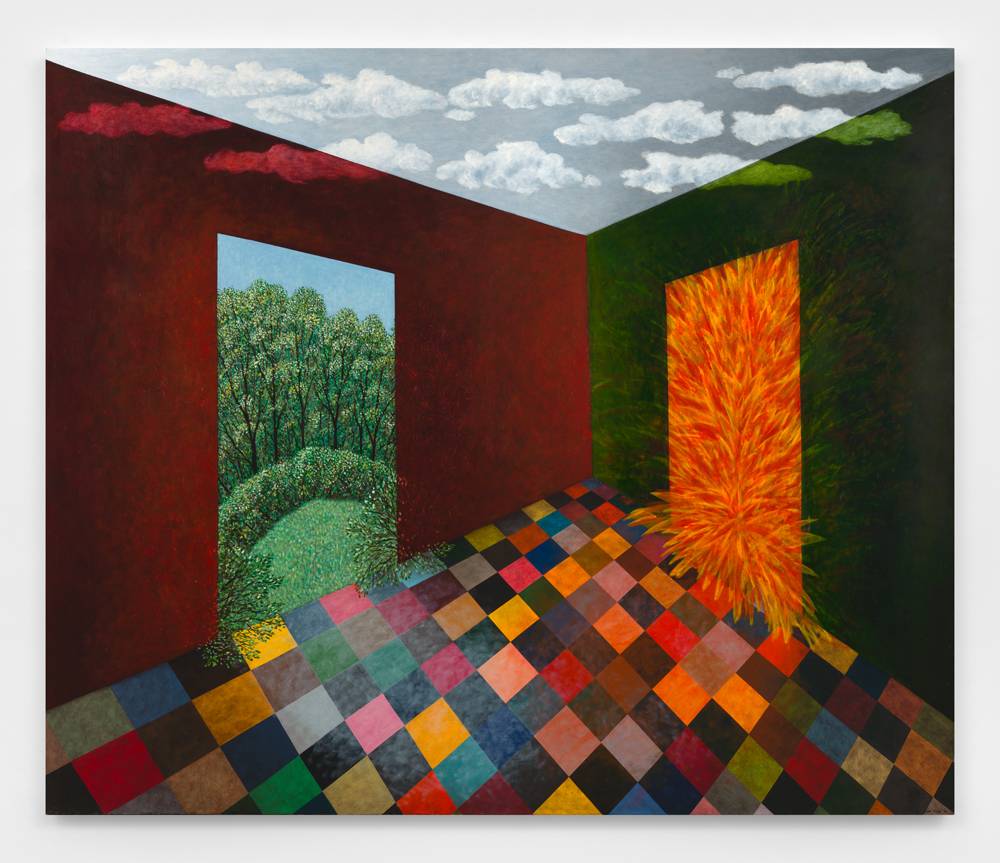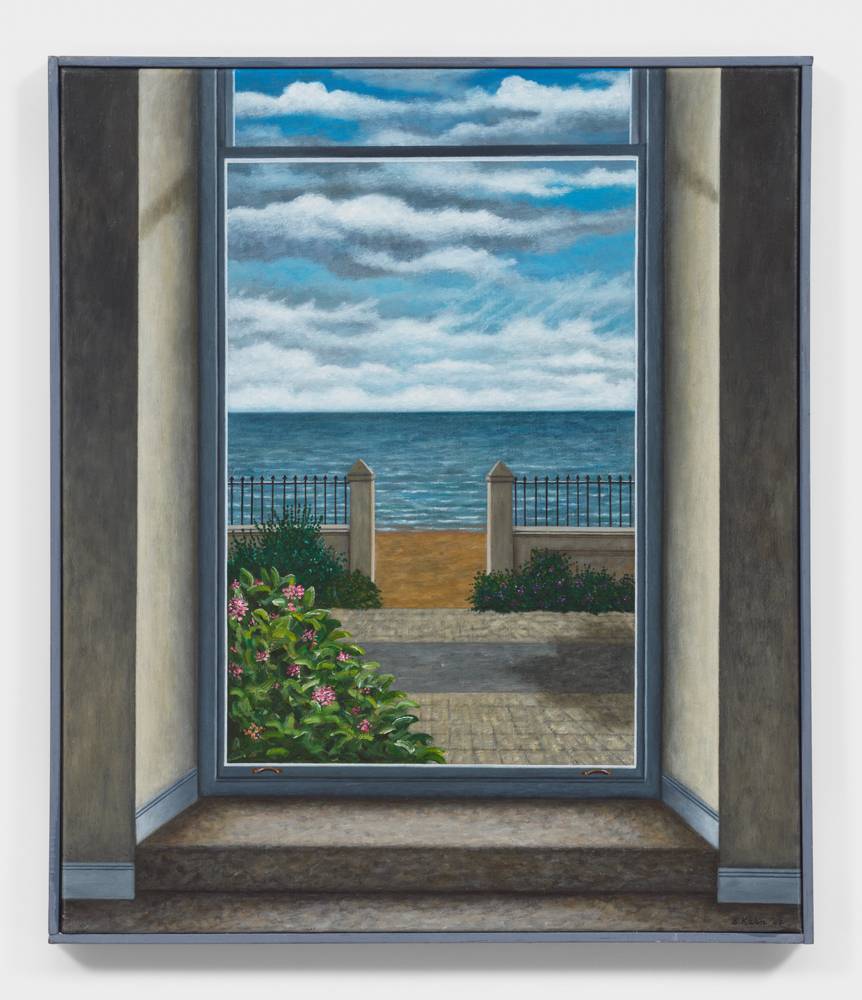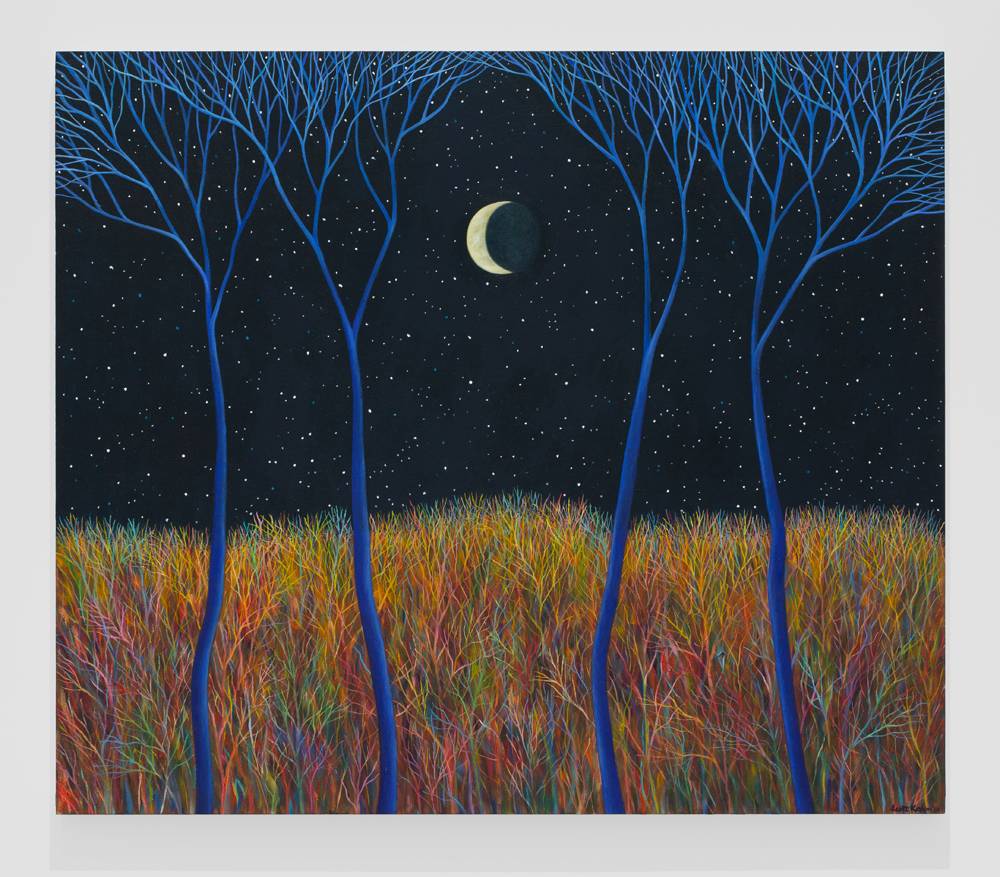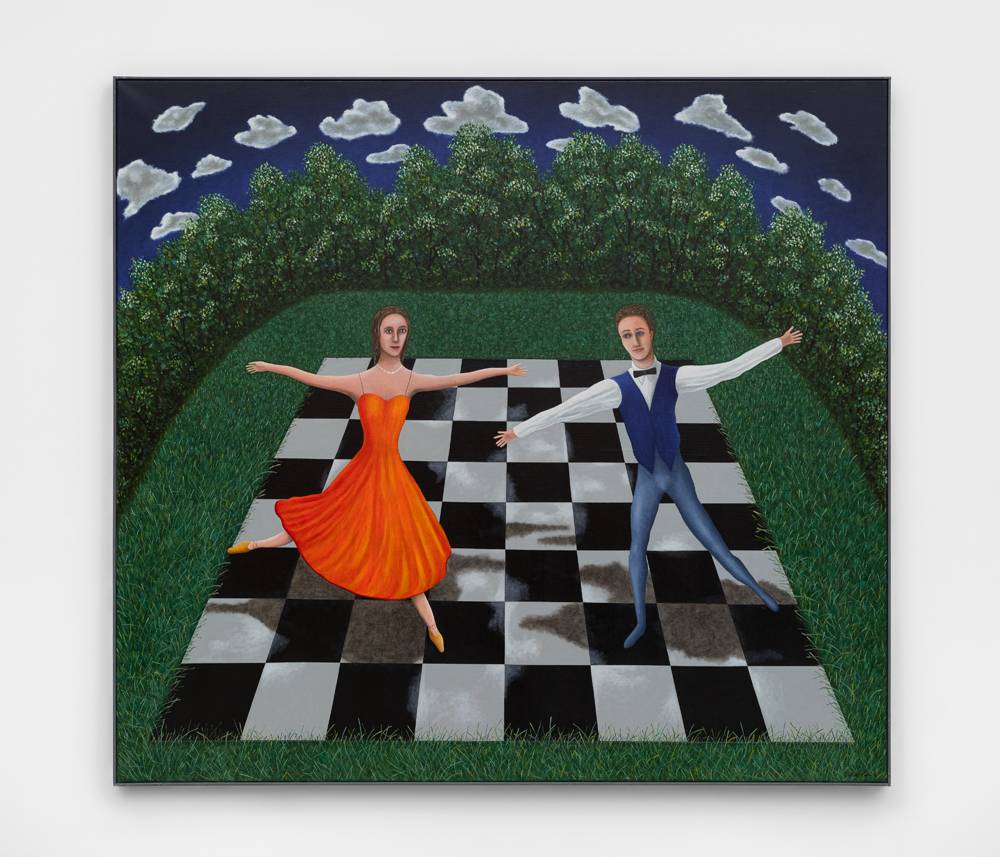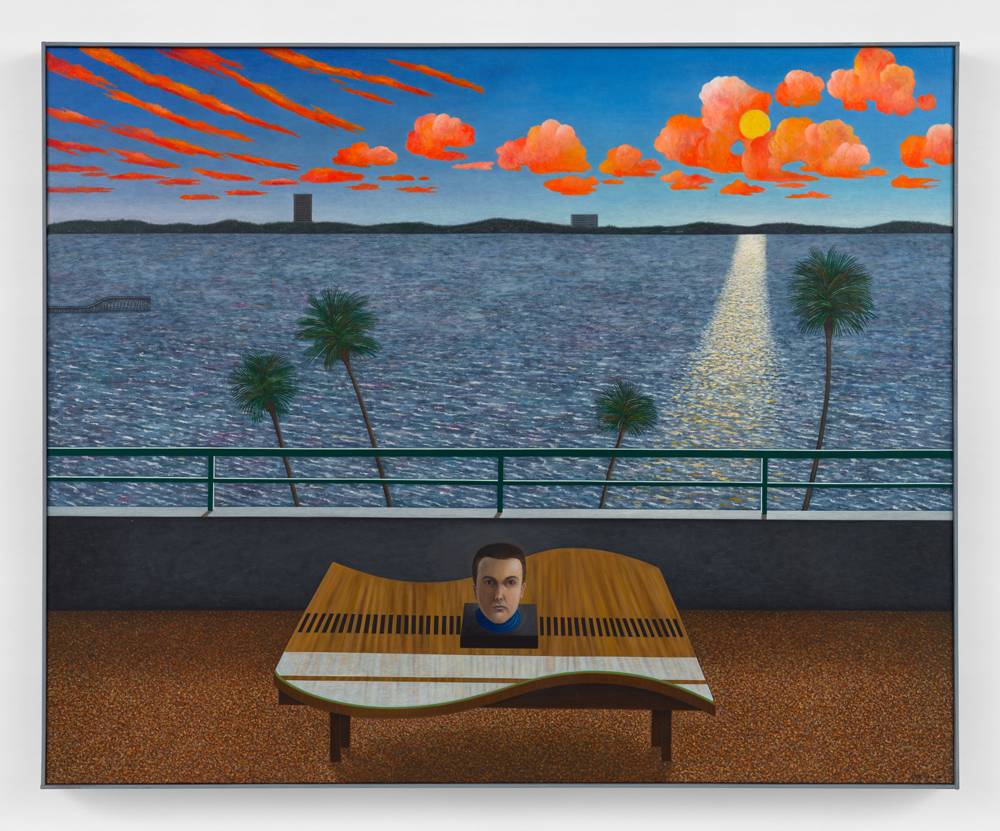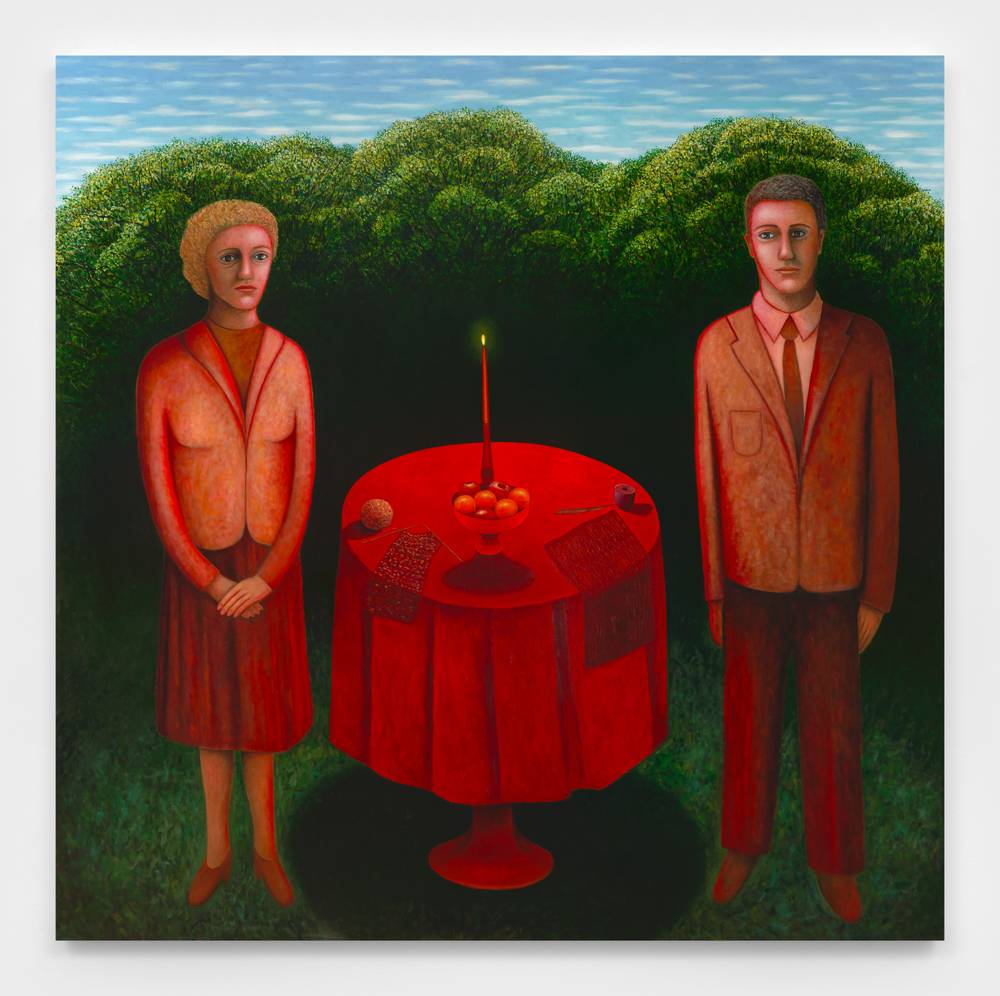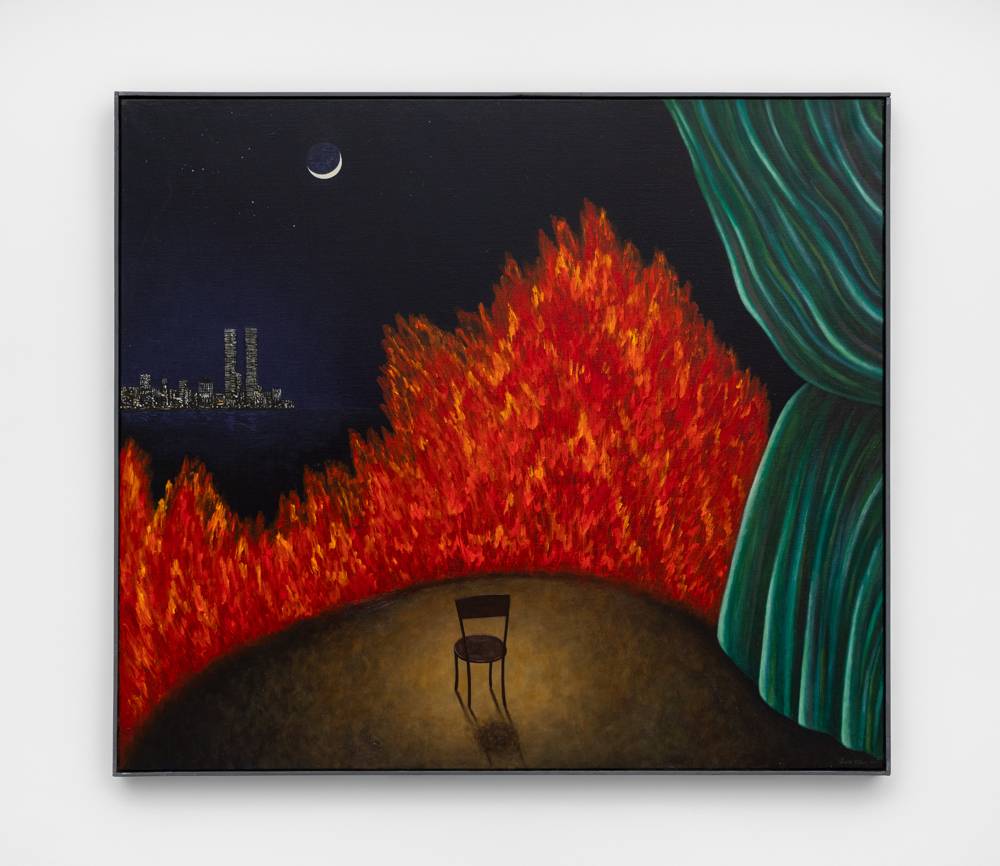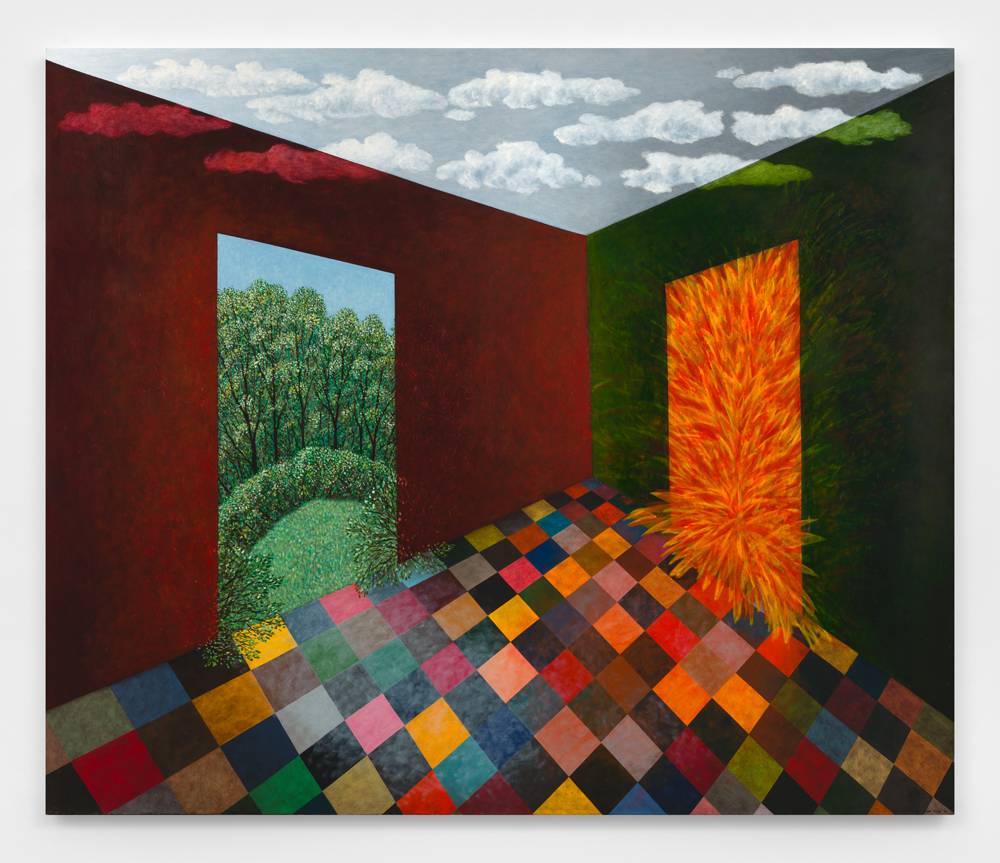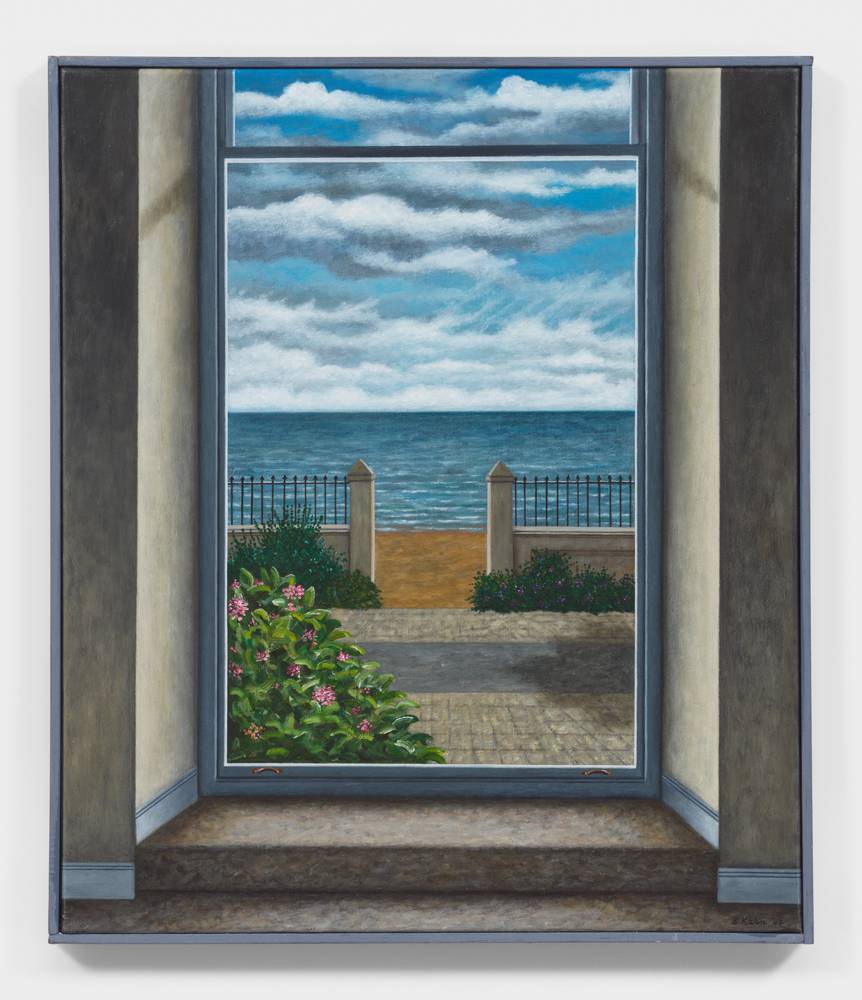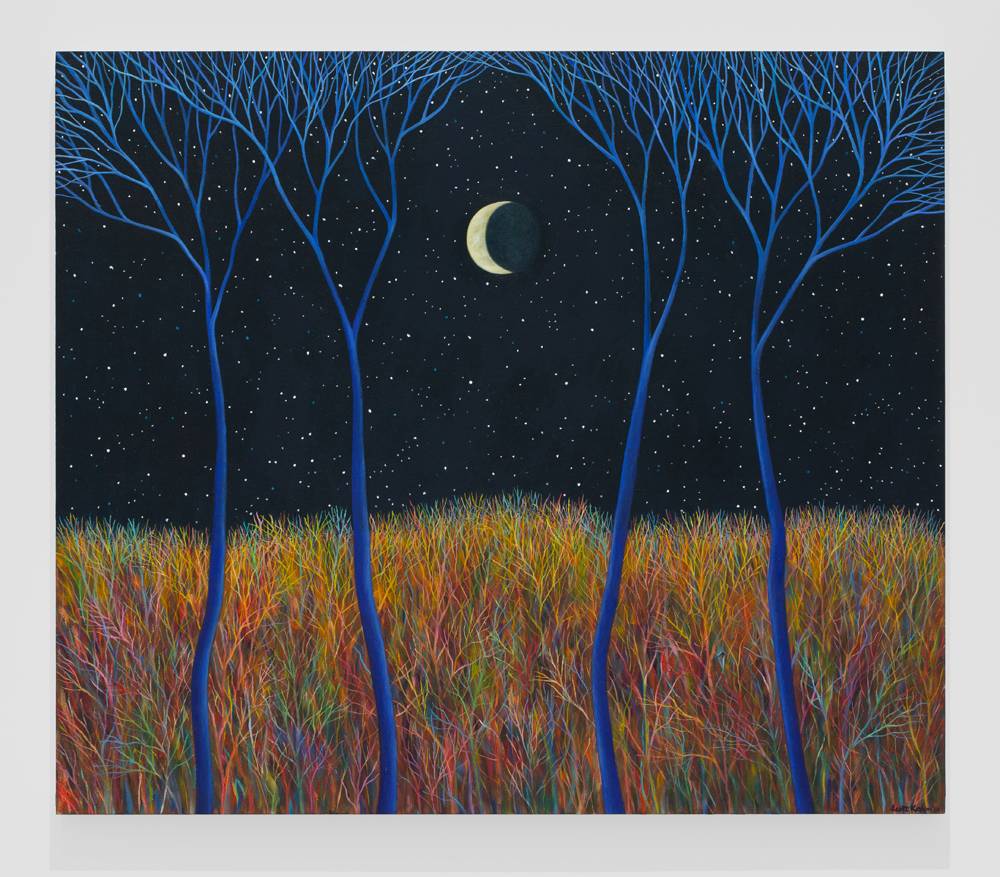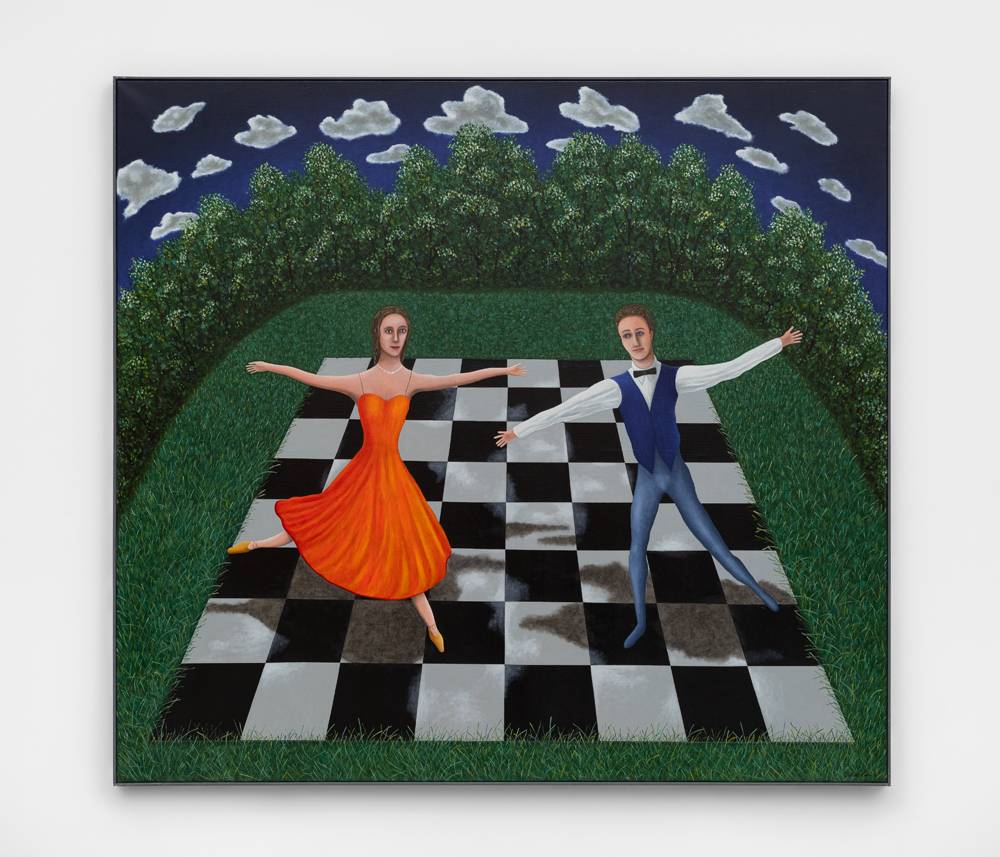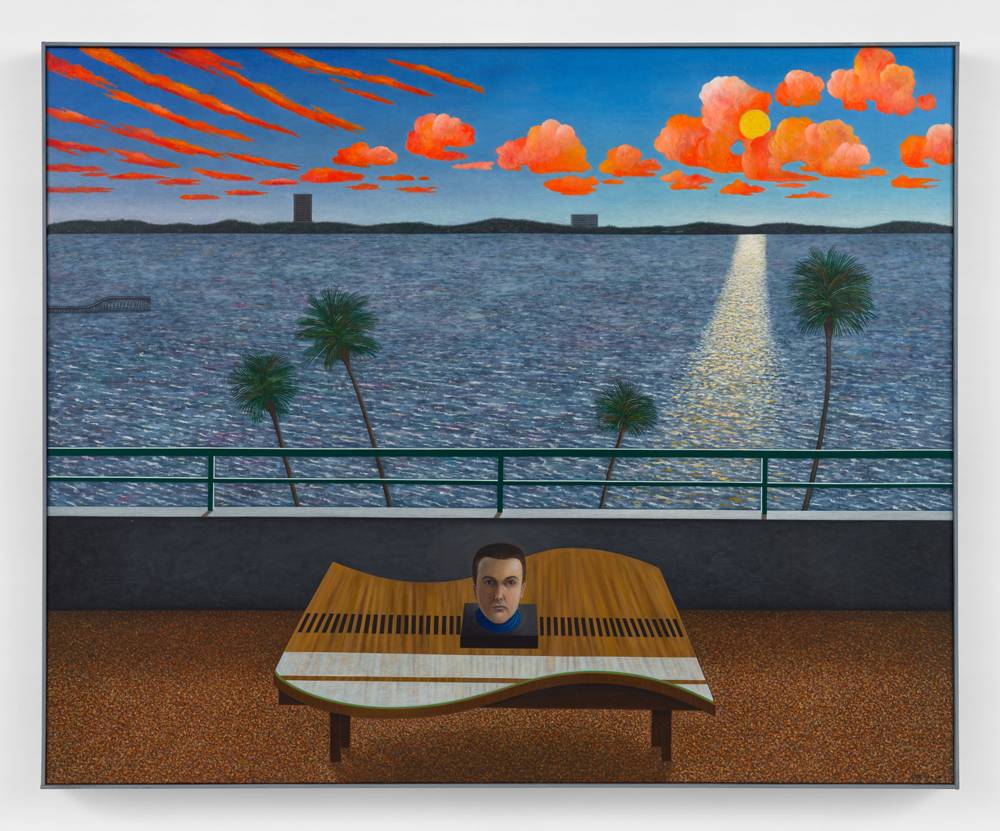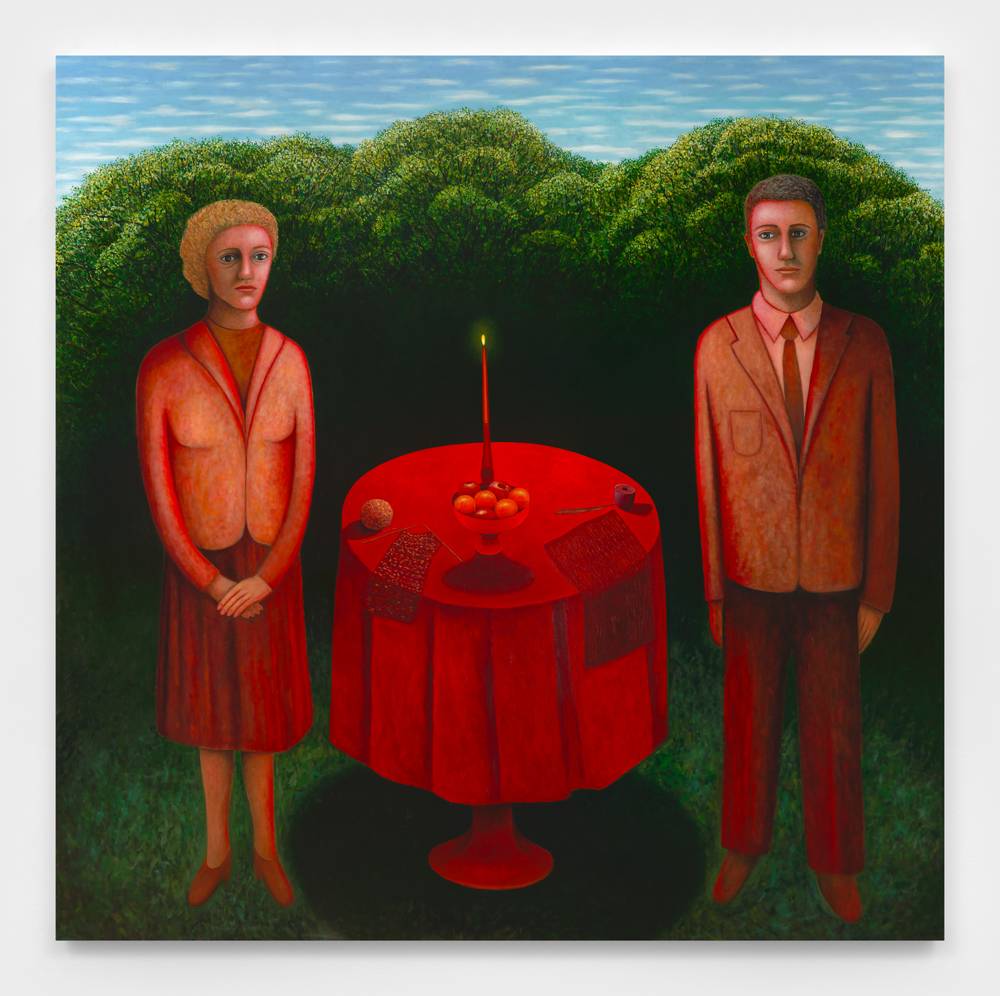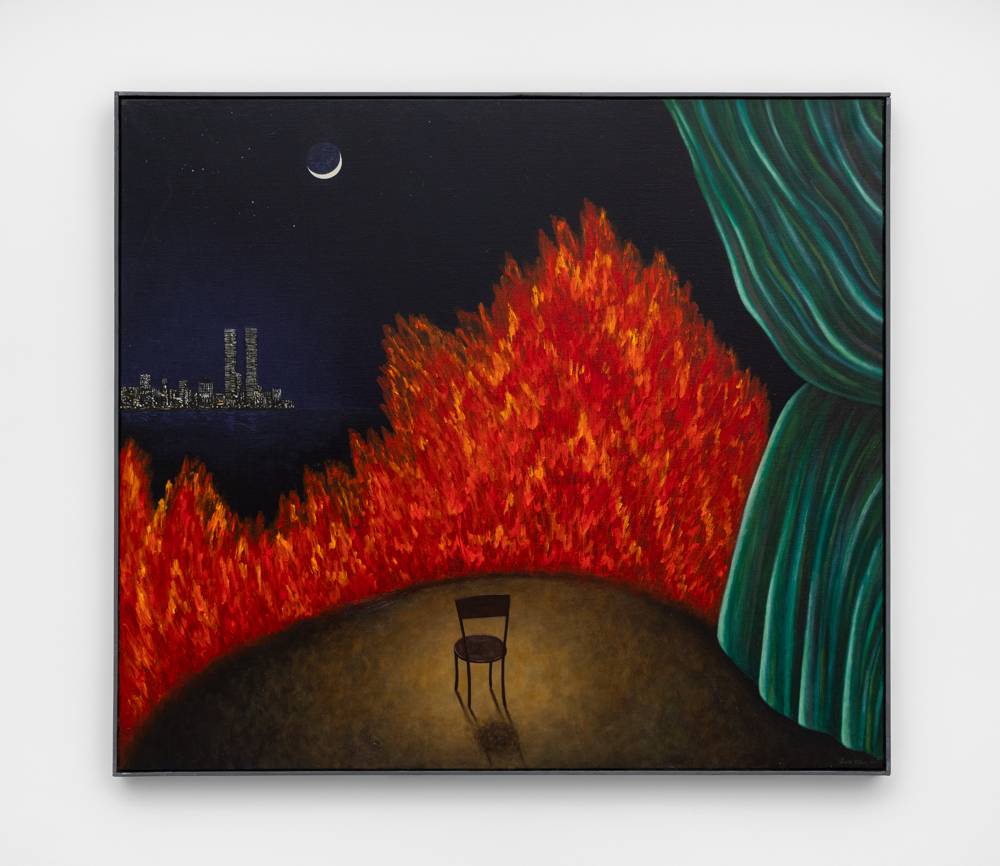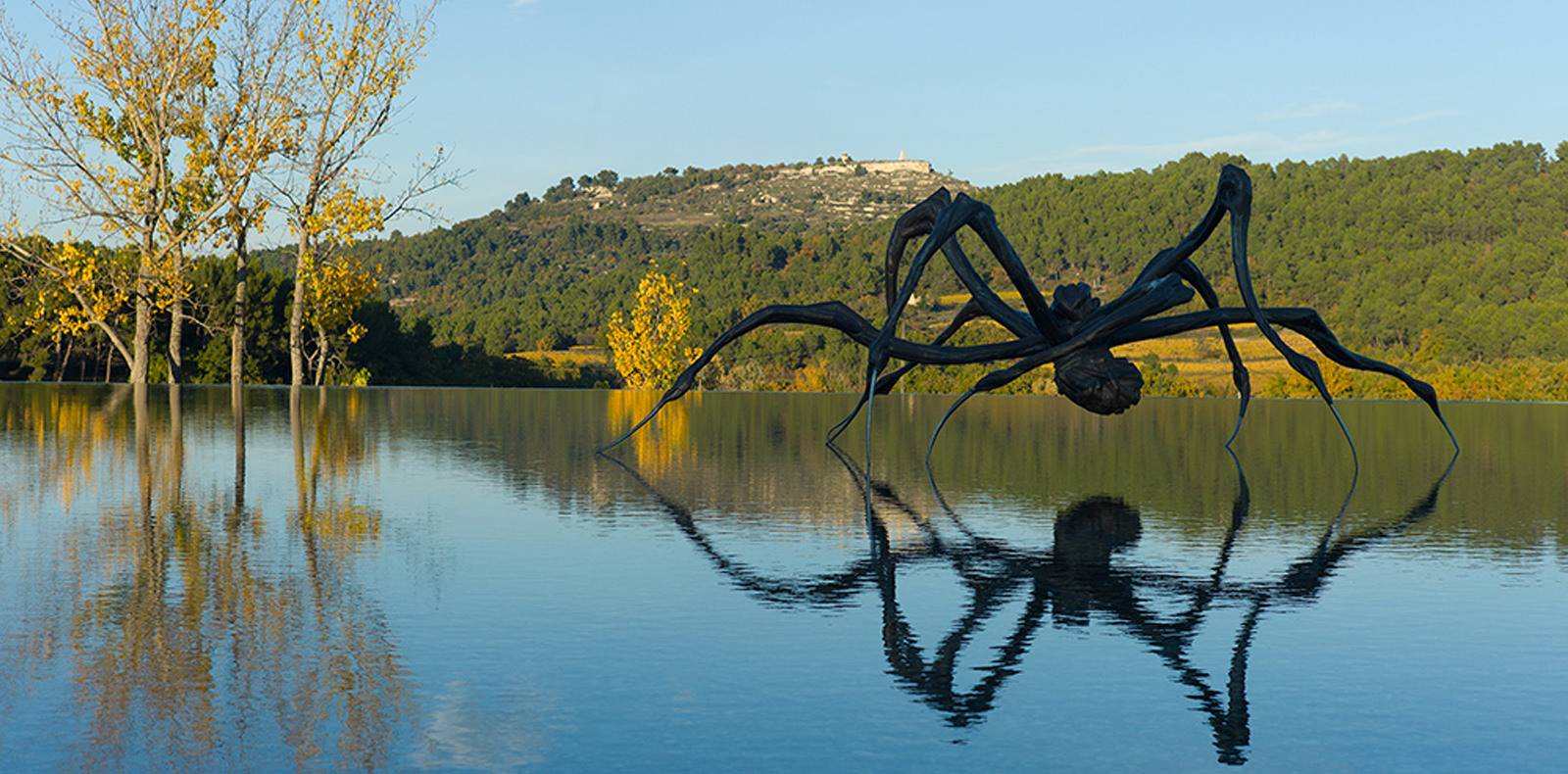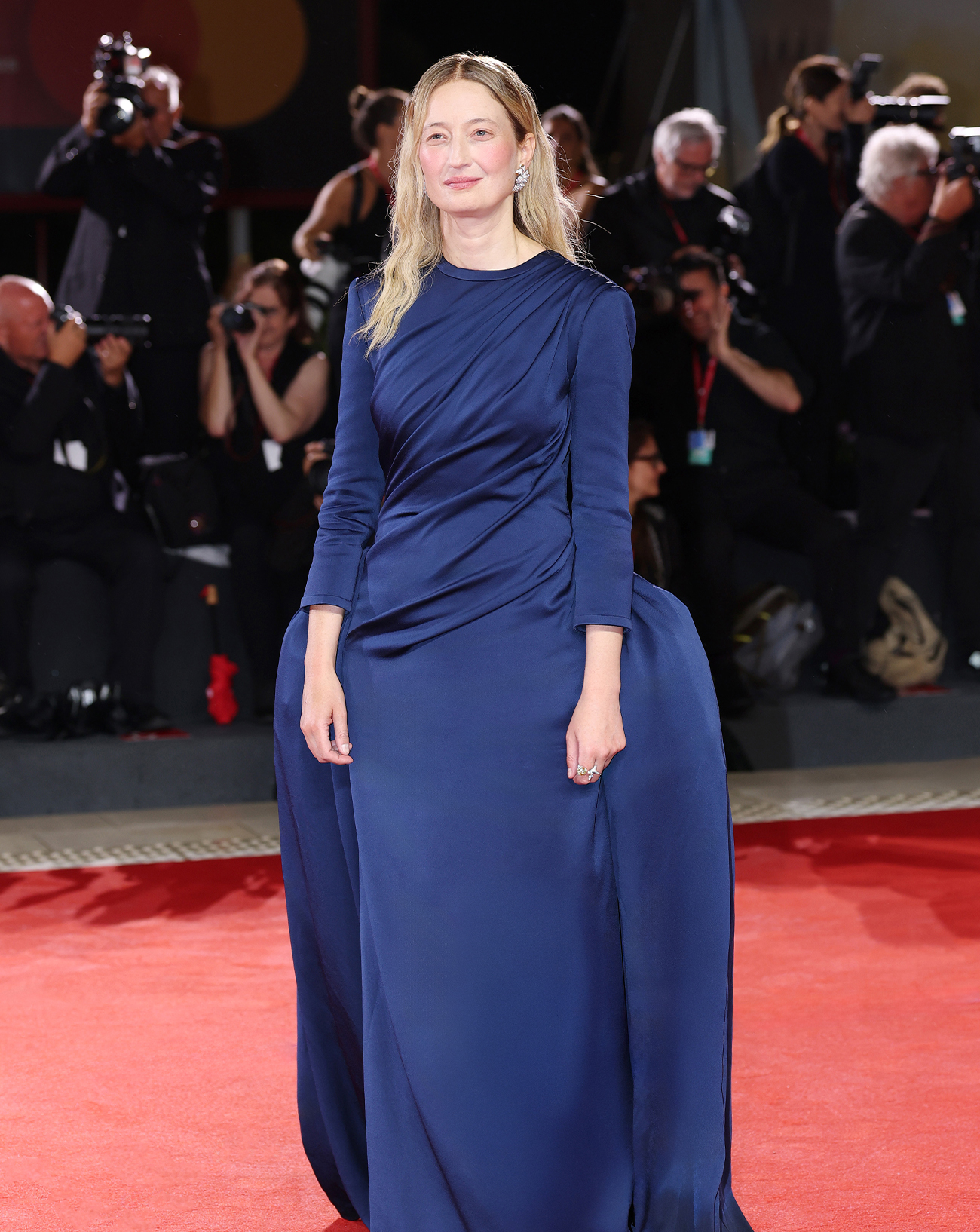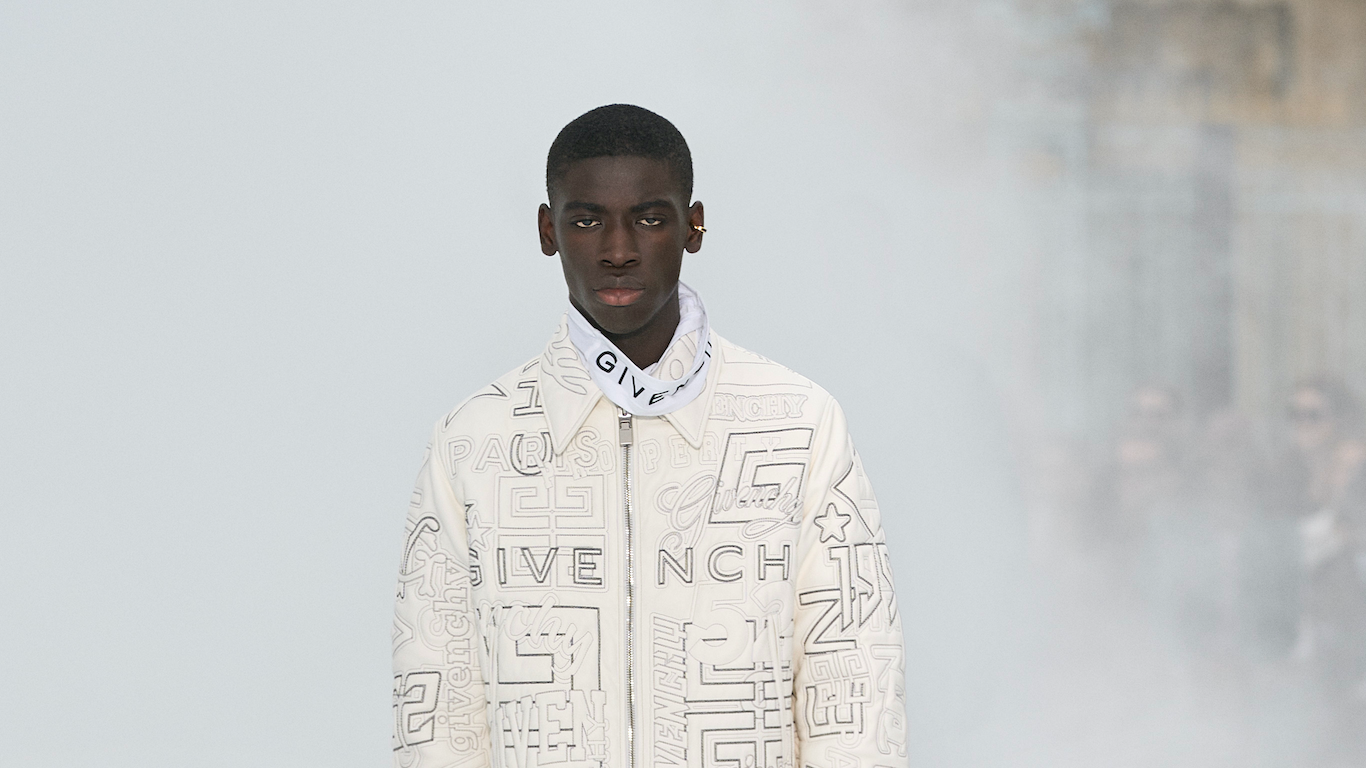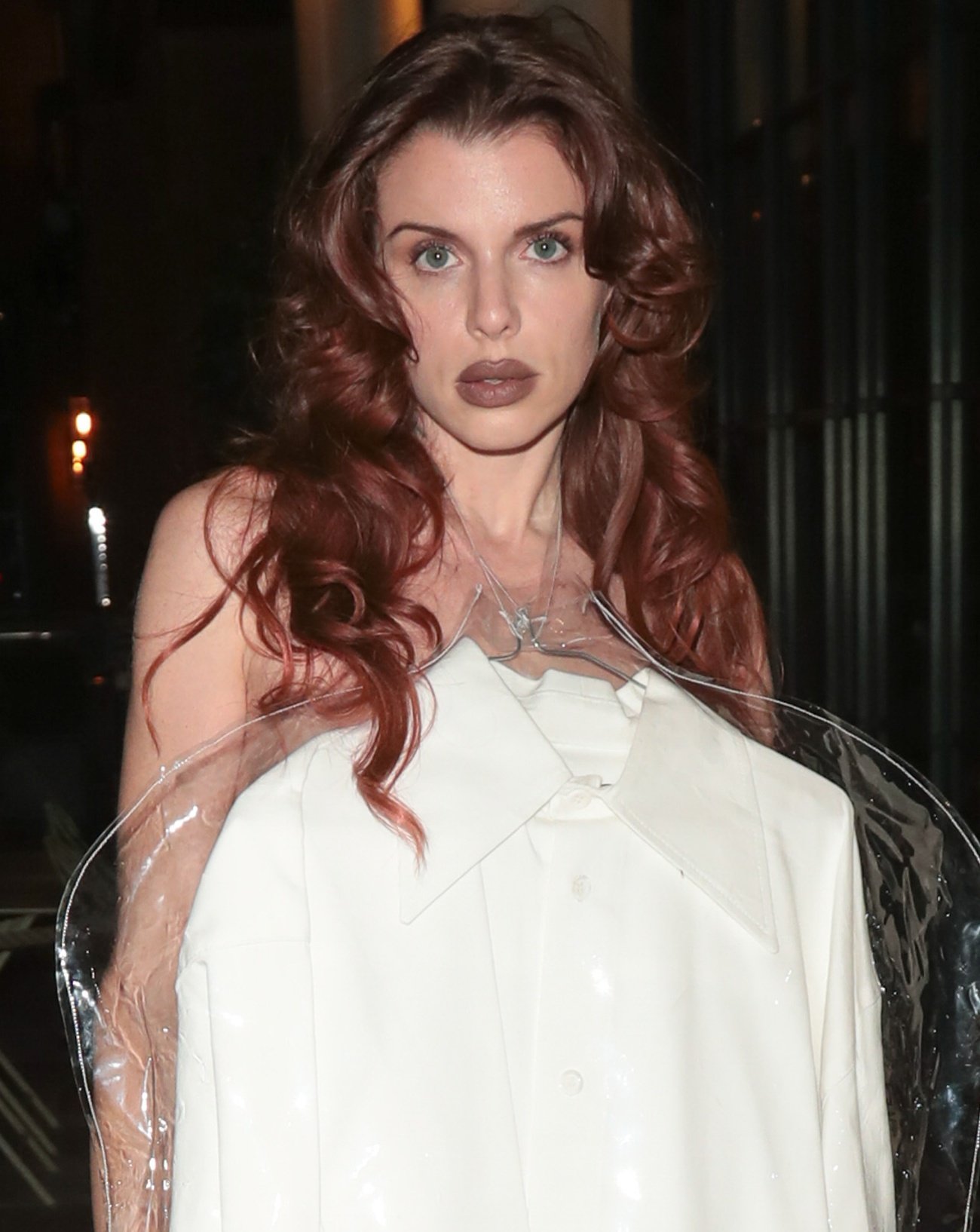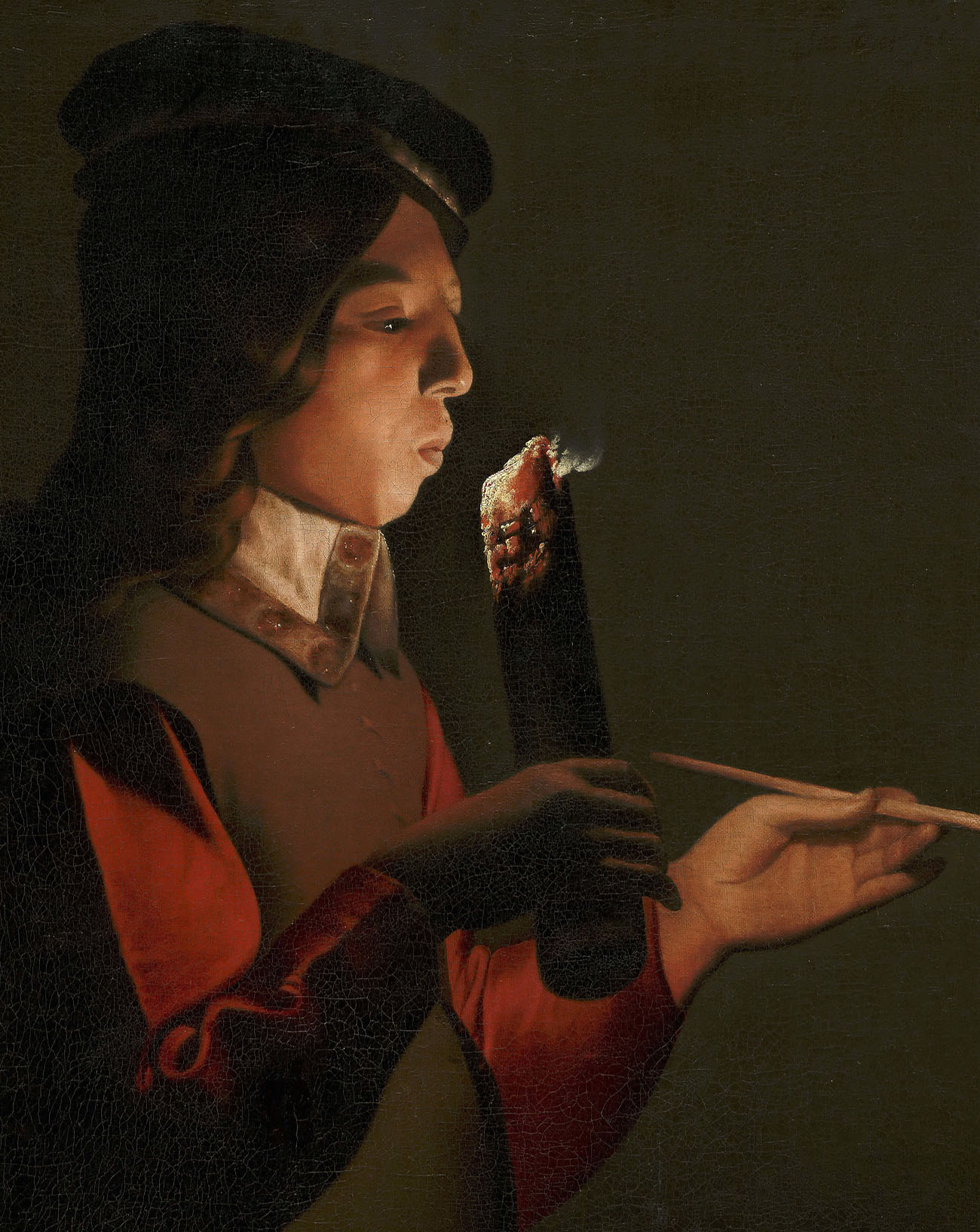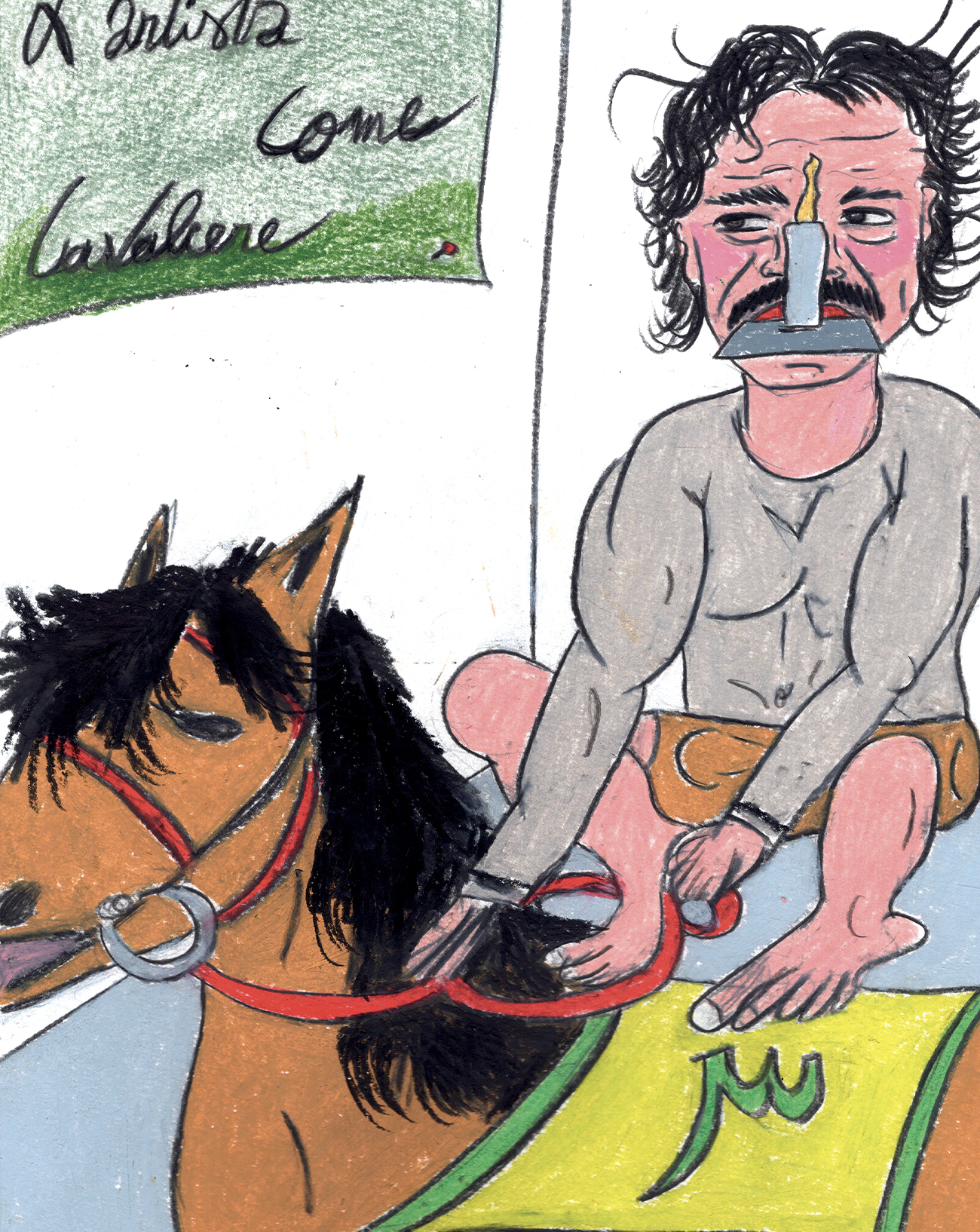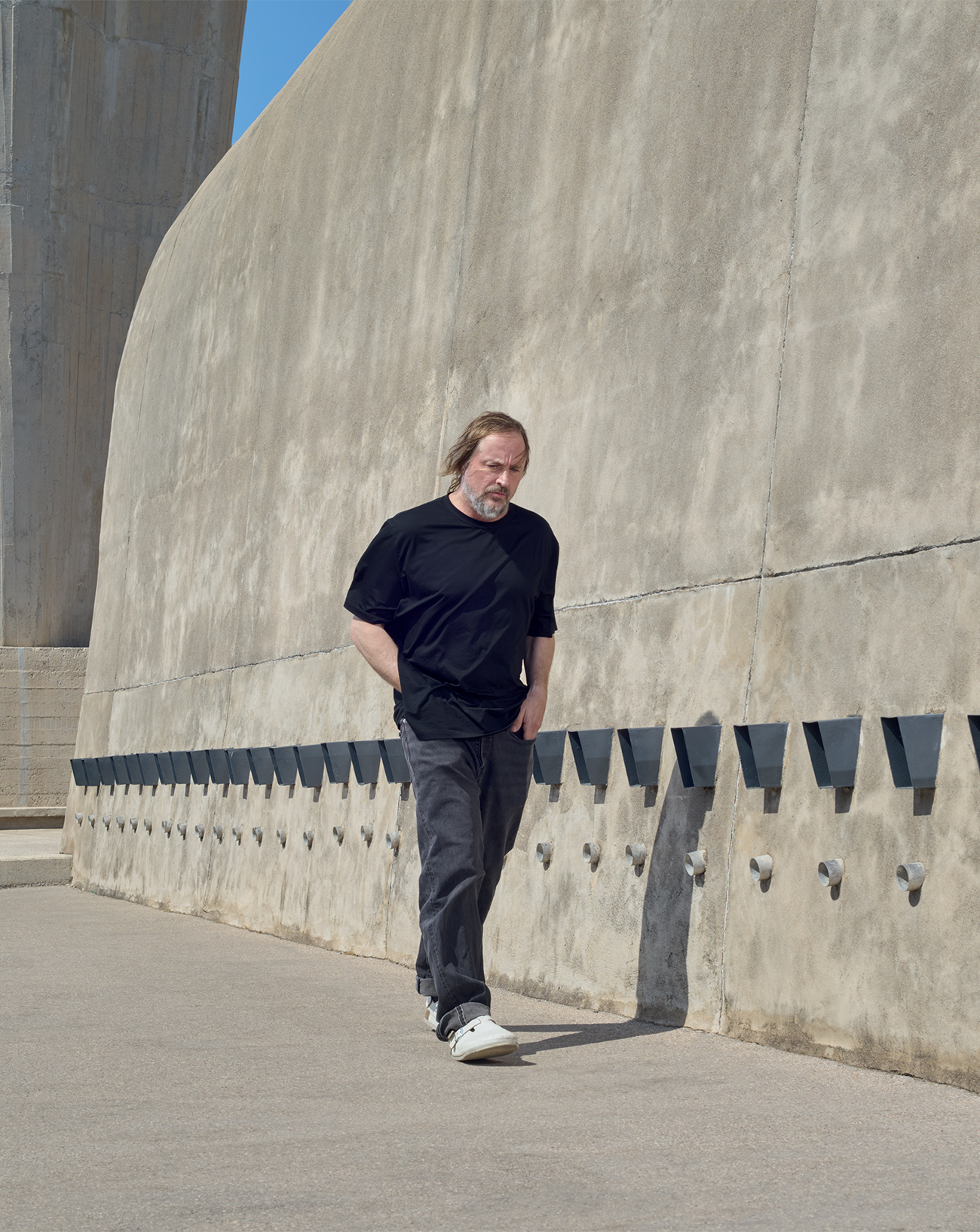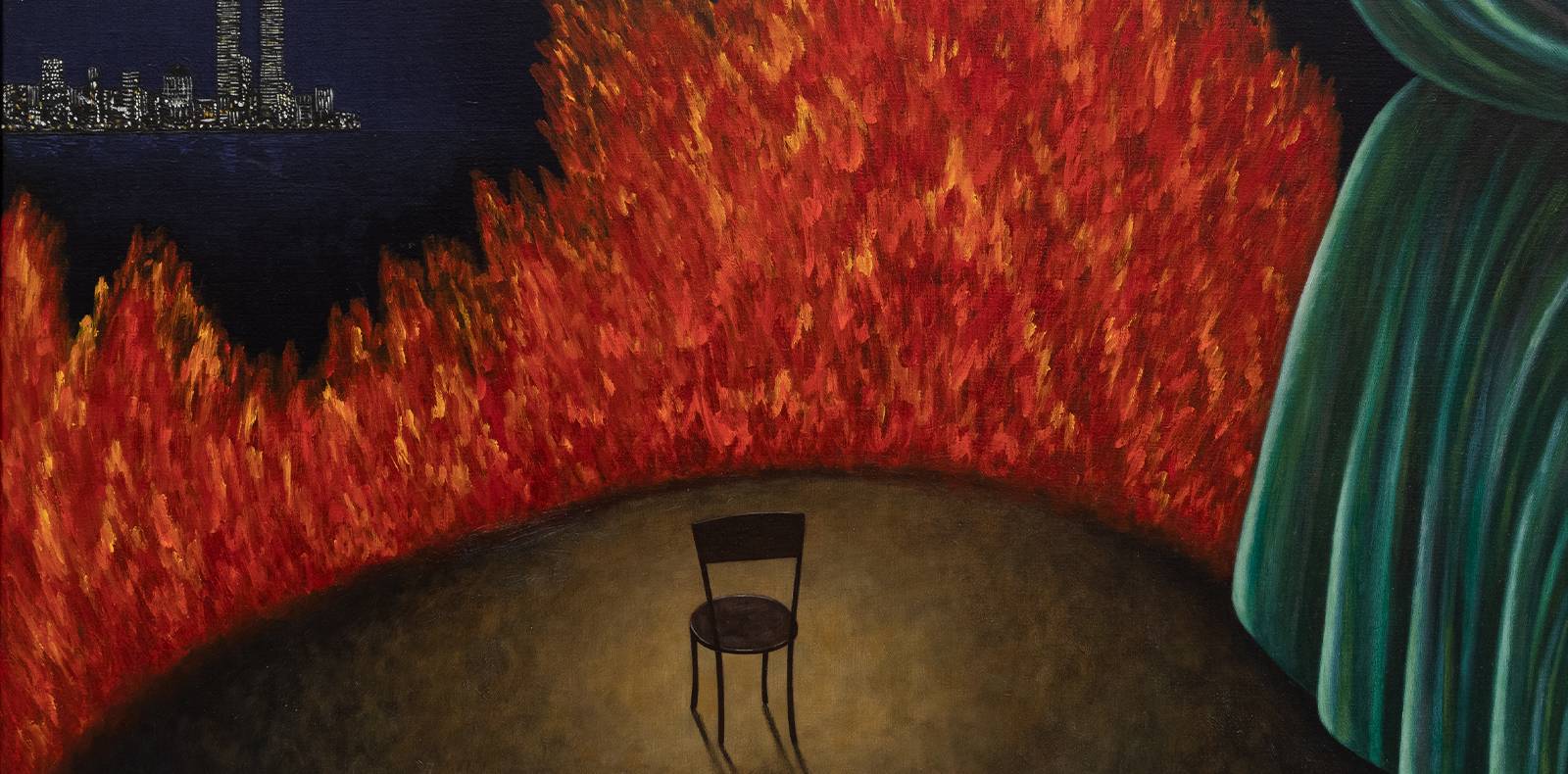
1

1
Scott Kahn: how Instagram revealed a 70-year-old painter
L’œuvre de Scott Kahn est marquée par l’omniprésence de la nuit, à travers des paysages oniriques qu’il peint de mémoire, où s’entremêlent le rêve et la réalité pour livrer un récit romancé de sa vie. Un artiste américain longtemps méconnu avant d’être redécouvert en 2017, grâce à Instagram, à l’âge de 71 ans et au sommet de son talent.
par Éric Troncy,
By Éric Troncy.
Scott Kahn : la redécouverte d’un peintre à plus de 70 ans
“Ce fut juste un voyage incroyable et très inhabituel. Parce que je suis toujours en vie”, confiait récemment Scott Kahn, aujourd’hui âgé de 76 ans, bien vivant en effet, dont le voyage fut loin d’être conventionnel – et prit ces dernières années un virage spectaculaire. Ce n’est pas une surprise, il n’y a pas de modèle pour une carrière artistique, et le succès critique et commercial, qui ne sont pas forcément synchronisés, n’adviennent pas nécessairement selon une feuille de route claire et organisée. L’artiste américain en fit l’expérience flagrante quand, après presque quarante ans de succès critique sans effusion et un succès commercial plus que modeste (il vendit bien ses tableaux, mais pour des sommes modiques), son travail fut subitement l’objet d’un emballement phénoménal. En effet, il suffit désormais d’un simple post Instagram pour attirer l’attention sur telle ou telle œuvre et propulser un artiste dans les sphères malignes de l’engouement du milieu de l’art et de son marché : pour Scott Kahn, cette redécouverte a tenu à la mention de son nom par un artiste de quarante ans son cadet. Il est étonnant de prendre aussi tardivement connaissance de l’importance de cette œuvre compacte et patiemment construite. Quarante années de peinture qui soudain s’imposent à nous dans toute leur fantaisie et leur adéquation aux goûts du jour, parce que les goûts évoluent, évidemment, et que tout d’un coup on regarde dans d’autres directions.
Lorsqu’elle prit corps dans les années 80, la peinture de Scott Kahn, figurative, s’établit aux confins du “réalisme magique”, qui combine des éléments de réalité avec des éléments de fiction et de fantaisie pure, plus oniriques que réels. Bien que les années 80 aient vu toutes sortes de façons de peindre s’imposer (la Bad Painting, le néo-expressionnisme, la figuration libre, la trans-avant-garde…) – et nombre d’expositions aujourd’hui historiques en faire le constat (“A New Spirit in Painting”, Royal Academy, Londres, 1981) –, le “réalisme magique” en fut écarté, et l’œuvre de Kahn avec lui. “Je pense que, dans l’art, l’essentiel est d’être soi- même et de ne pas se voir résumé à des catégories ou à des mouvements”, note-t-il. S’il fréquenta Mark Rothko et les expressionnistes abstraits, ses personnages hiératiques et presque naïfs, ses paysages oniriques minutieux aux détails maniaques évoquant aussi bien le Douanier Rousseau que David Hockney ou Magritte, ne semblèrent pas précisément au goût du jour de ce “retour à la peinture”. Mais quarante années plus tard, au bénéfice d’un nouveau “retour à la peinture” qui valide désormais tous les styles (et aussi, probablement, d’un marché en pleine forme qui cherche partout de nouveaux produits), son œuvre s’est brusquement installée au premier plan. Il faut s’en réjouir, et apprécier à sa juste valeur l’opportunité de la rencontrer.
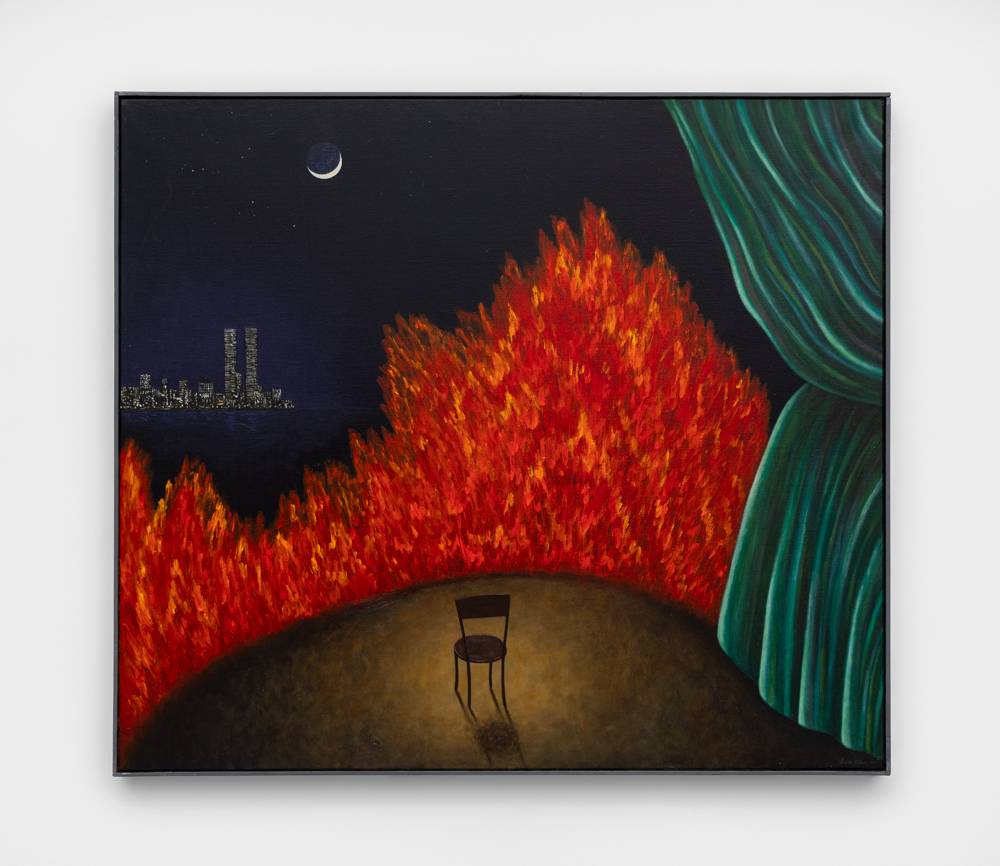
Scott Kahn est né en 1946 à Springfield, dans le Massachusetts. Celui qui obtint sa licence en art à l’université de Pennsylvanie, puis décrocha au début des années 70 un master en beaux-arts à l’université Rutgers du New Jersey, se considère volontiers comme un autodidacte : “On peut considérer que les artistes en général sont autodidactes dans la mesure où, quelle que soit l’éducation qu’ils reçoivent, finalement, pour trouver leur voix, leur voix unique, ils doivent se débarrasser de leur éducation. Je pense que la démarche à suivre pour n’importe qui, pour n’importe quel artiste ayant un minimum de consistance, c’est de rejeter les maîtres, comme l’a dit Alexander Brook. La chose que je considère vraiment profitable dans le fait d’aller à l’école, de recevoir une éducation, c’est d’obtenir des compétences techniques. Mais, en définitive, l’objectif dont j’ai vraiment pris conscience autour de 20 ans est celui-ci : vous devez trouver votre nature artistique unique.” Il crut, au sortir de ses études, avoir trouvé sa “nature artistique” dans la peinture abstraite. “Je n’étais pas encore conscient du besoin que j’avais de voir mon travail refléter ma vie et les circonstances de ma vie. Il m’a fallu plusieurs années pour le comprendre.”
“Je considère mon travail comme un journal intime visuel, un enregistrement de ma vie.”
Mais cette nature s’imposa à lui, dans les années 80, sous d’autres traits, figuratifs cette fois, tandis que se formait en lui la conviction qu’une œuvre doit avoir des liens étroits avec la vie de son auteur, et qu’il doit la documenter à sa manière, comme une sorte de journal intime. “Je considère mon travail comme un journal intime visuel, un enregistrement de ma vie, un reportage sur les lieux et les personnes que je rencontre. Il n’est pas facile de commencer une peinture, malgré la diversité et la complexité du monde. Il est important pour moi d’avoir une raison de peindre, que l’élan soit puissant. Si je ne me sens pas happé moi-même par mon travail, comment puis-je espérer qu’il provoque une réaction chez le spectateur ? Si je réussis dans mon entreprise, ce qui est souhaitable, une profondeur, une poésie et une forme d’honnêteté émaneront de ma toile. L’impact doit être immédiat. Pour parvenir à ce résultat, une personne créative fait appel à tous les outils à sa disposition : techniques, émotionnels, intuitifs et intellectuels. L’acte de créer nous apprend donc qui nous sommes et nous révèle notre propre rapport à la vie. C’est la raison pour laquelle je peins.”
Des peintures pensées comme un journal poétique
Les tableaux de Scott Kahn ne sont pas un journal littéral, avec informations et événements, mais un journal poétique exprimant une réalité à un moment précis, sous les traits d’un paysage, d’un portrait, d’un intérieur. Ceux-ci sont réalisés “de mémoire”, et laissent la porte ouverte aux bizarreries de toutes sortes aperçues en rêve. Est-ce pour cela que la nuit est l’un des sujets récurrents de Kahn ? Son œuvre est ponctuée de paysages nocturnes féeriques où trônent des lunes orangées… “L’hiver s’empare du paysage et, au clair de lune, nous regardons les ombres par la fenêtre. Aucun son ne trouble la nuit. Aucun mouvement ne brise l’immobilité, tout est glace et désolation…”, écrit dans un poème son compagnon, le poète et dramaturge Frederick Kirwin : celui-ci apparaît dans deux peintures de Kahn, en 1987 et en 2015. “Je peins dans la chambre d’apparat d’une vieille demeure de 1905”, indique Scott Kahn, qui évoque la maison qu’il occupe à New Rochelle, dans la banlieue nord de New York, une ville avec front de mer et presque 100 hectares de jardins publics – et il est tentant d’y voir la source de tant de peintures de Kahn figurant des paysages marins et des parcs aux arbres bien ordonnés. Les plus grands tableaux sont réalisés dans son atelier de Brooklyn, et Kahn exposa régulièrement à New York. Pendant vingt-cinq ans, la galerie Katharina Rich Perlow lui offrit des expositions personnelles et vendit son travail pour des sommes qui n’ont rien à voir avec sa cote actuelle.
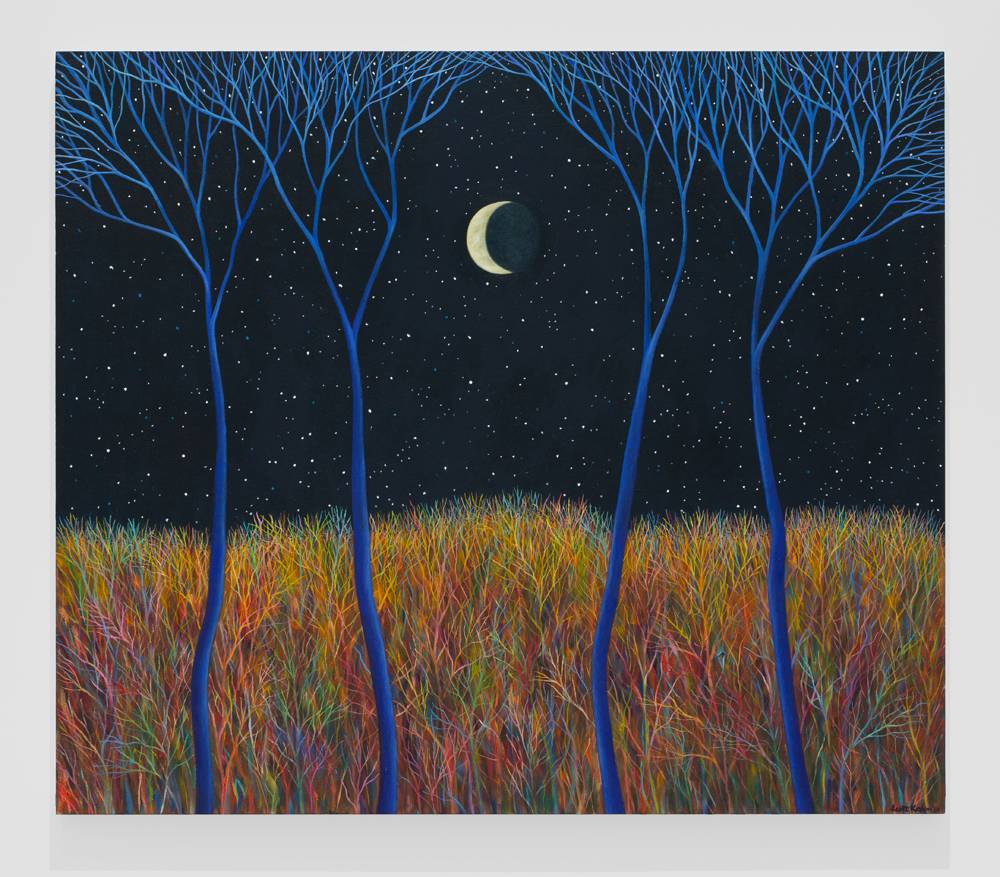
Une entrée à succès dans le marché de l’art, soutenue par Almine Rech
Comme c’est désormais fréquemment le cas, les réseaux sociaux modifièrent de façon substantielle l’intérêt porté à sa peinture. C’est sur Facebook qu’il commença il y a quelques années une correspondance avec le jeune peintre Matthew Wong qui, dans une interview en novembre 2018, cita Scott Kahn comme l’une de ses références en peinture (en compagnie de rien de moins que Vincent Van Gogh, Alex Katz et Yayoi Kusama). Wong fit l’acquisition d’une peinture de Kahn, Cul de sac (2017), et la posta sur Instagram. “Cela a déclenché une arrivée massive de personnes sur mon profil et des gens ont commencé à passer la porte de mon studio à Dumbo – de grands collectionneurs, des galeries, d’autres artistes. C’était non-stop et, jusqu’à présent, ça n’a pas faibli.” En juillet 2021, la galeriste Almine Rech annonça qu’elle représentait désormais Kahn dans le monde. Elle ouvrit à peine quatre mois plus tard une exposition de Kahn dans sa galerie parisienne de l’avenue Matignon. Lorsque, deux semaines après, son tableau Cadman Plaza (2002), une huile sur toile de 157,5 sur 193 cm passa en vente aux enchères chez Phillips à Hong Kong, l’estimation de 130 000 dollars fut pulvérisée par une adjudication à un peu moins de 1 million de dollars, et le 26 mai 2022, chez Christie’s Hong Kong, Big House, Homage to America (2012) fut adjugée 1,4 million de dollars.
Scott Kahn envisage avec philosophie le nouveau tournant pris par sa carrière. “On espère toujours ne pas mourir dans un atelier rempli de peintures. J’ai de la chance parce que maintenant les miennes sont à l’extérieur, dispersées dans le monde”, dit-il. Il se souvient aussi avec un peu de malice des collectionneurs qui firent bien avant tout ça l’acquisition de ses toiles. “Beaucoup sont désormais bien plus âgés, comme je le suis, et peut-être qu’ils cherchent à réduire leur train de vie, ou que leurs enfants quittent le nid et qu’ils prennent leur retraite. Ça ne m’étonnerait pas qu’ils décident de vendre aux enchères les tableaux qu’ils ont achetés il y a vingt ou trente ans…”
Scott Kahn est représenté par la galerie Almine Rech.
Scott Kahn: the rediscovery of a painter aged over 70 years old
“It’s just been an amazing journey and very unusual. Because I’m still alive,” recently declared the 76-year-old artist, who is indeed very much alive and whose trajectory has not only been far from conventional but took a spectacular turn in recent years. It’s not such a surprise though, for there is no set model for an artistic career, and critical and commercial success don’t necessarily come in a clear or organized manner, or even at the same time. Scott Kahn knows this well, he who, after almost 40 years of lukewarm critical success and modest earnings (his work sold well but for very low sums), became a star late in life. Overnight, the oeuvre of a whole career came to our attention in its exciting entirety. This kind of phenomenon is becoming more and more common in an age when, thanks to social media, artists suddenly find themselves the darlings of the art world and its capricious market. In Kahn’s case, all it took was for his name to be mentioned by another artist 40 years younger than him.
It’s strange to discover so late in the day the importance of this compact, original and patiently constructed oeuvre – 40 years of painting that suddenly wows us in all its fantasy and its resonance with today’s tastes. Because taste changes, of course, and now we look at things differently. In the 1980s, when it began to crystallize, Kahn’s figurative work had a magic-realism side to it in which the real and the fictional, the everyday and the oneiric, were combined. And although the 80s saw all sorts of painting styles come to the fore (Bad Painting, Neo-Expressionism, Free Figuration, Trans- Avant-Garde, etc.), as the exhibitions of the time demonstrate (e.g. 1981’s A New Spirit in Painting at London’s Royal Academy), magic realism was ignored, and Kahn’s work along with it. “I think the main thing in art is to be uniquely yourself and not to be summed up in categories or movements,” he says, philosophically.
Though he frequented Mark Rothko and the Abstract Expressionists, Khan produced pictures in which hieratic, almost naive figures were set in dreamlike landscapes rendered with all the maniacal detail of a Douanier Rousseau. His work, which also recalled Hockney and Magritte, was apparently not to the taste of the champions of this “return to painting.” Now, 40 years later, at the moment of a another “return to painting” that this time discriminates against no style – and also, probably, in the context of a very healthy art market that is on the lookout for novelty –, his oeuvre abruptly finds itself in the limelight. We should be delighted by this turn in events, for it allows us to encounter an exciting body of work that might otherwise have passed under the radar.
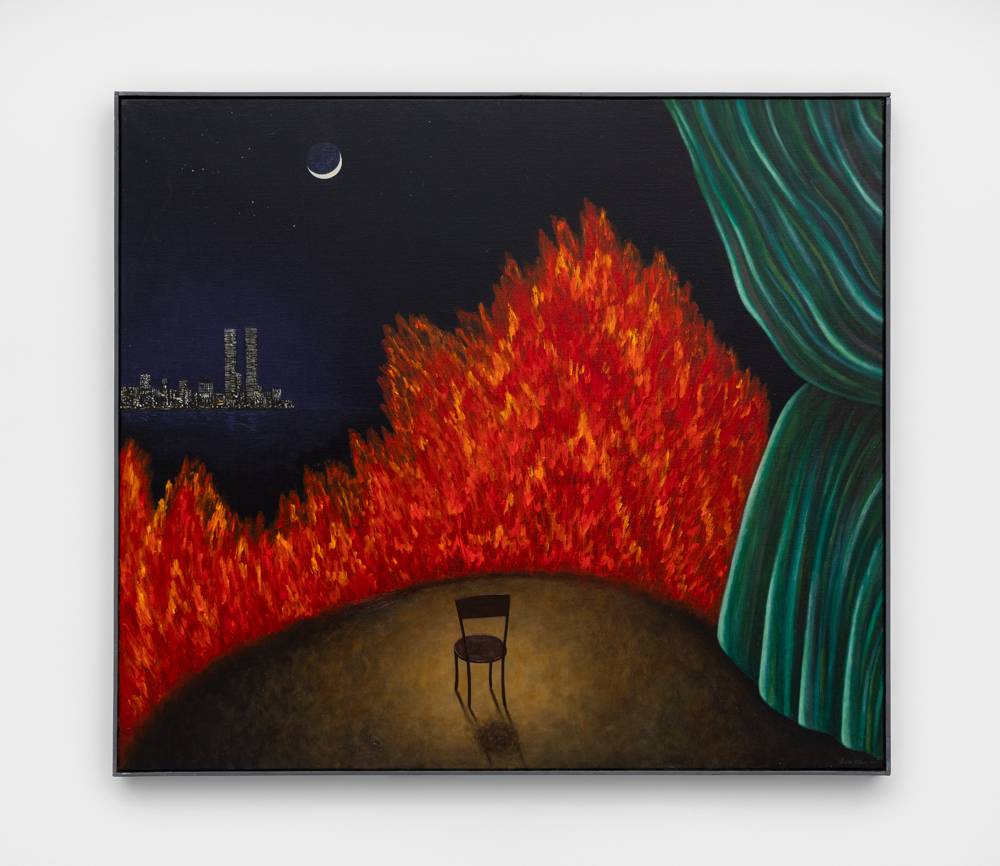
Kahn was born in 1946, in Springfield, Massachusetts, and though he earned his Bachelor of Arts at UPenn and obtained his MFA at Rutgers in the early 1970s, he considers himself an autodidact. “You could say that artists are self-taught to the extent that, whatever education they had, eventually, to find your voice, your unique voice, you have to throw up your education. I think the process for anyone, for any artist of substance, is to throw off the masters, as Alexander Brook said. The main thing I consider to be valuable about going to school, about getting an education of every sort, is that it gives you some technical skills, but ultimately I went through this project more consciously in my 20s: you have to find your unique artistic nature.” On leaving art school, he thought he had found his artistic nature in abstraction. “I wasn’t yet aware of the need I had to have my work reflect my life and the circumstances of my life. I went through a several-year process to learn that.” It finally came to him in the 1980s, under a figurative guise this time, at a point when he began to be convinced that an artist’s oeuvre must be closely linked to their personal life, which they should document in their own way like a sort of private diary. As he explained, “I consider my work to be a visual diary, a record of my life, a reporting of the places and people I encounter. It is not easy to begin a painting, despite the variety and complexity of the world. It is important to me to have a reason to paint, for the impulse to be strong.
“I consider my work a visual diary, a record of my life”.
If I do not feel compelled to work, how can I expect the viewer to respond to what I am reporting? If I am successful, hopefully, the painting will have depth, poetry, and honesty. The effect should be direct and clear. To achieve this result, a creative person calls upon every tool available to him: technical, emotional, intuitive, and intellectual. The act of creating, therefore, teaches us and reveals to us who we are and our relationship to life. This is why I paint.” Kahn’s is not a literal diary though, but rather a poetic one that captures the psychological reality of a particular moment through a landscape, a portrait or an interior. His paintings are done from memory, which leaves the door open to all sorts of strange incursions from his dreams. Is this why Kahn so often paints the night? His oeuvre is full of fantastical nightscapes over which orange moons cast their strange glow… “…Winter grips the landscape, and we watch the moonshadows out the window. No sound troubles the night. No movement breaks the stillness, all is ice and desolation,” wrote his boyfriend, the poet and playwright Frederick Kirwin, who has appeared twice in Kahn’s paintings, once in 1987 and again in 2015.
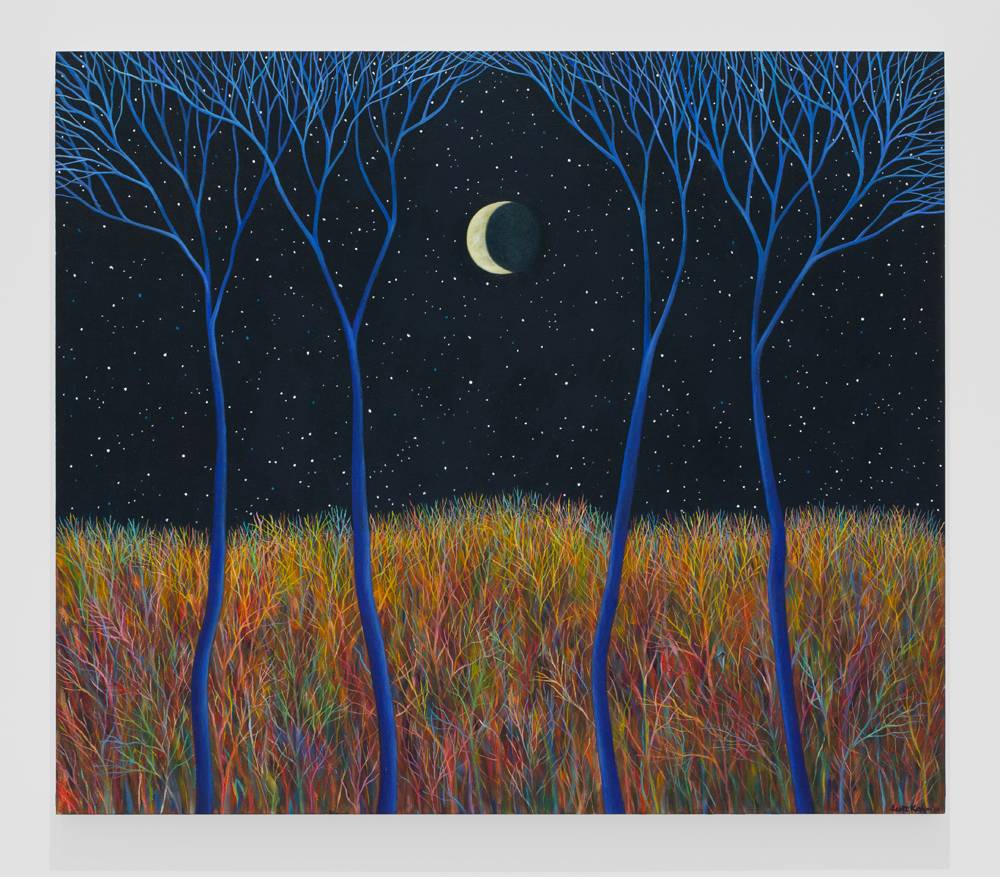
A late but successful entry into the art market, supported by Almine Rech
“I paint in the master bedroom of an old 1905 house,” says Kahn of his home in New Rochelle in the northern suburbs of New York City. Given New Rochelle’s sea front and 100 hectares of parks and gardens, it’s tempting to see in it the source of many of his pictures, which include seascapes and parks with well-regimented groups of trees. He paints his largest canvases in his Brooklyn studio, and regularly exhibited in New York City – for 25 years he was represented by Katharina Rich Perlow, who put on solo shows for him and sold his work for prices that have nothing to do with his value today. As is so often the case, social media completely changed the pub- lic’s appreciation of his work. A few years ago, on Facebook, he began corresponding with a young painter, Matthew Wong, who in a 2018 inter- view quoted Kahn as one of his influences, alongside Van Gogh, Alex Katz and Yayoi Kusama. Wong later acquired Kahn’s Cul-de-Sac (2017), and posted it on Instagram. “It set off an avalanche of people going over to my feed and people started streaming through my studio door in Dumbo,” recalls Kahn. “Big collectors, galleries, other artists. It was non-stop, and it hasn’t abated to this day.” In July 2021, Almine Rech announced that she was henceforth representing Kahn worldwide, and put on a Kahn exhibition at her Paris space in avenue Matignon barely four months later. Two weeks after the show opened, his canvas Cadman Plaza (2002) went under the hammer at Phillips Hong Kong, pulverizing the $130,000 estimate when it fetched just under $1 million, while on 26 May 2022, at Christie’s Hong Kong, Big House, Homage to America (2012) sold for $1.4 million.
Kahn takes his change in fortune philosophically. “You hope you don’t die in a studio full of paintings. I’m lucky because now they’re out in the world.” He also wonders, with a hint of irony, what will happen to those he sold over the course of his long career. “Many of these collectors are now much older, as I’m older, and maybe they’re downsizing or their children have left their homes and they’re retiring. It wouldn’t surprise me if they auctioned the paintings they bought 20, 30 years ago.”
Scott Kahn is represented by the Almine Rech gallery.
